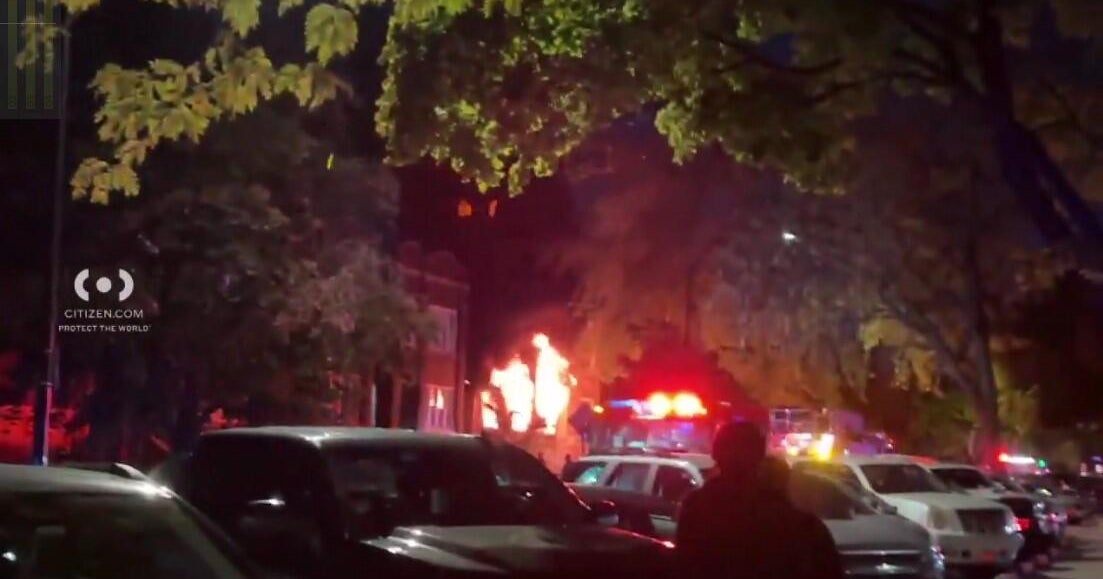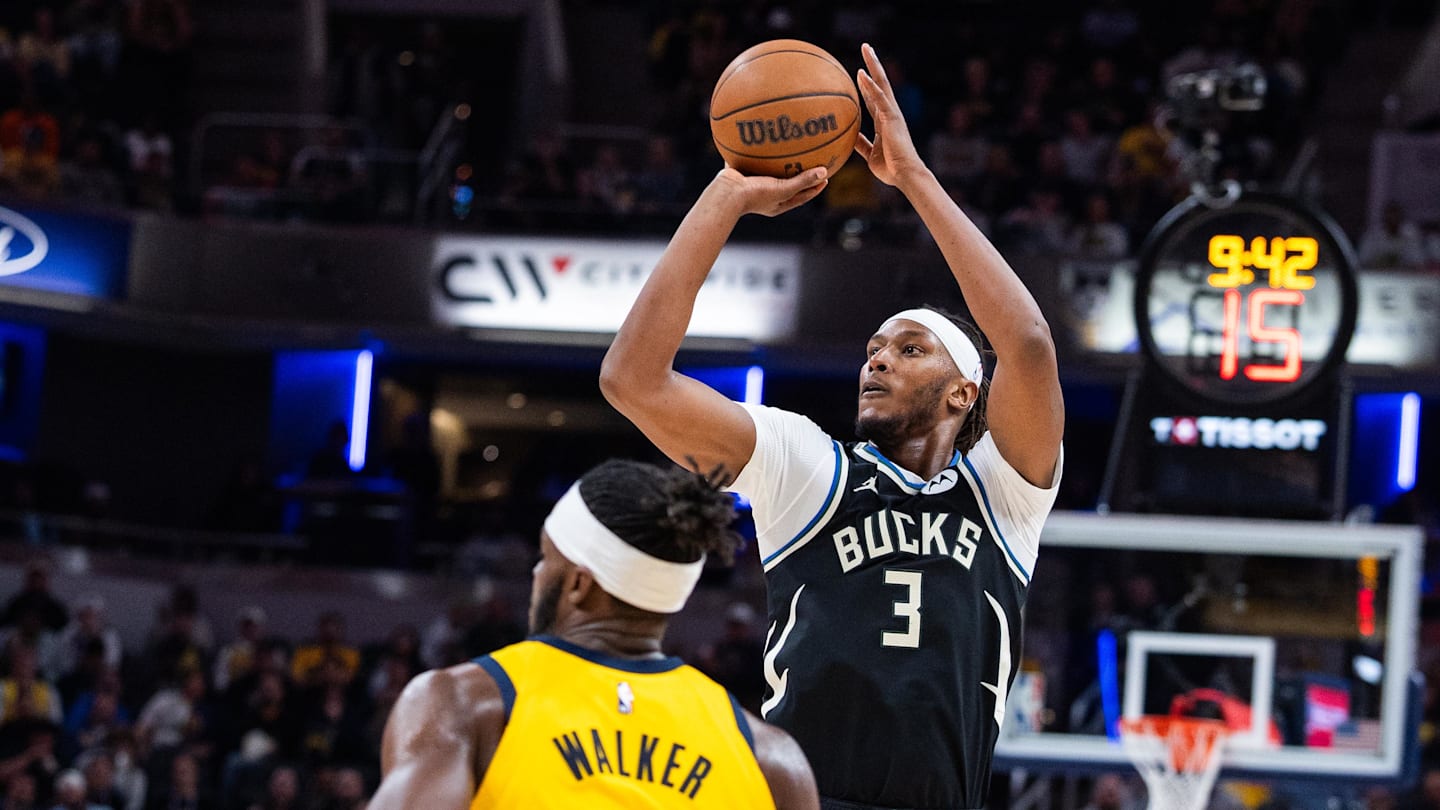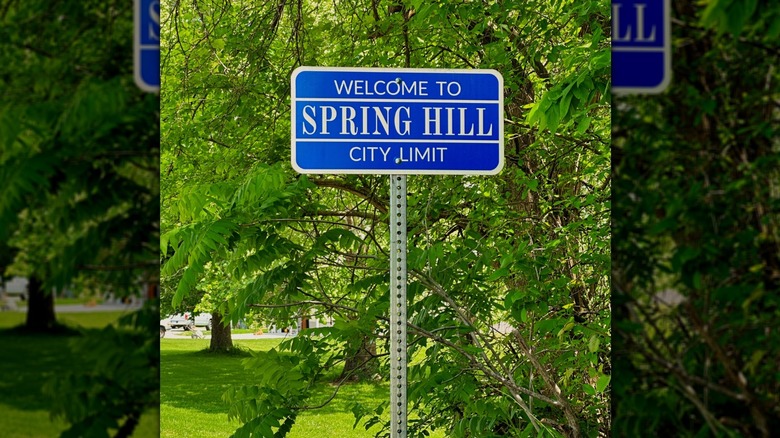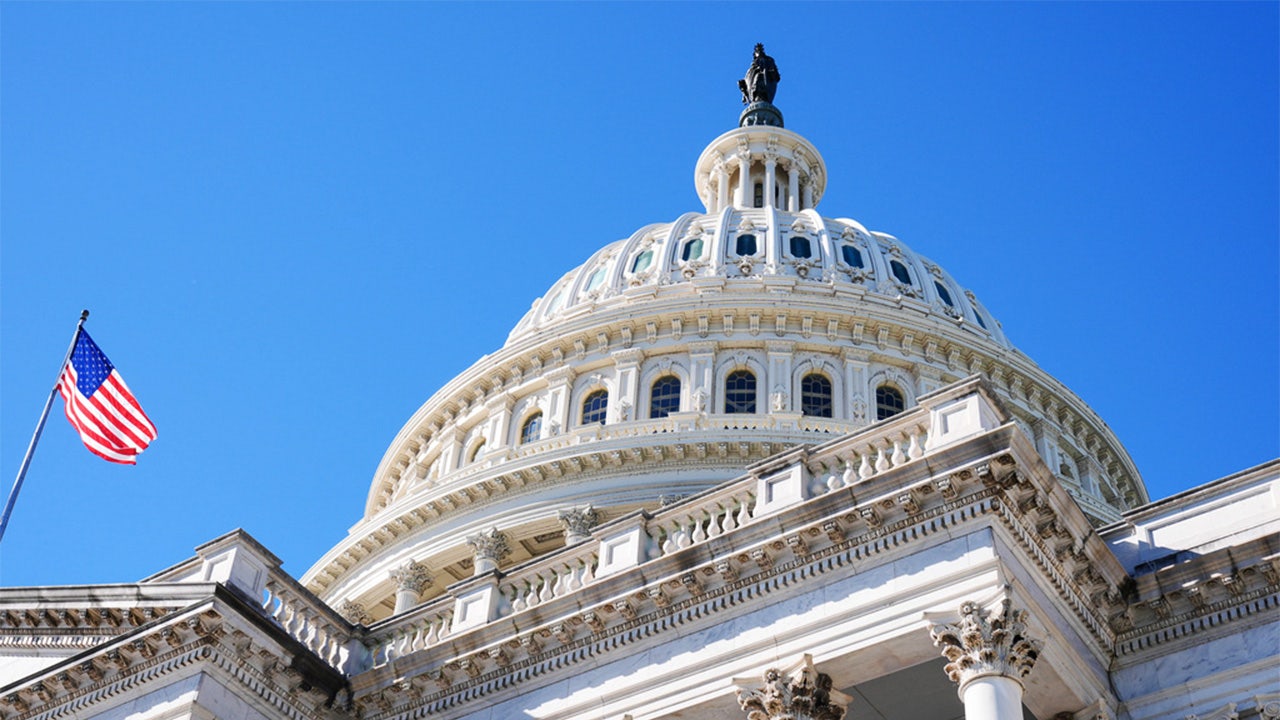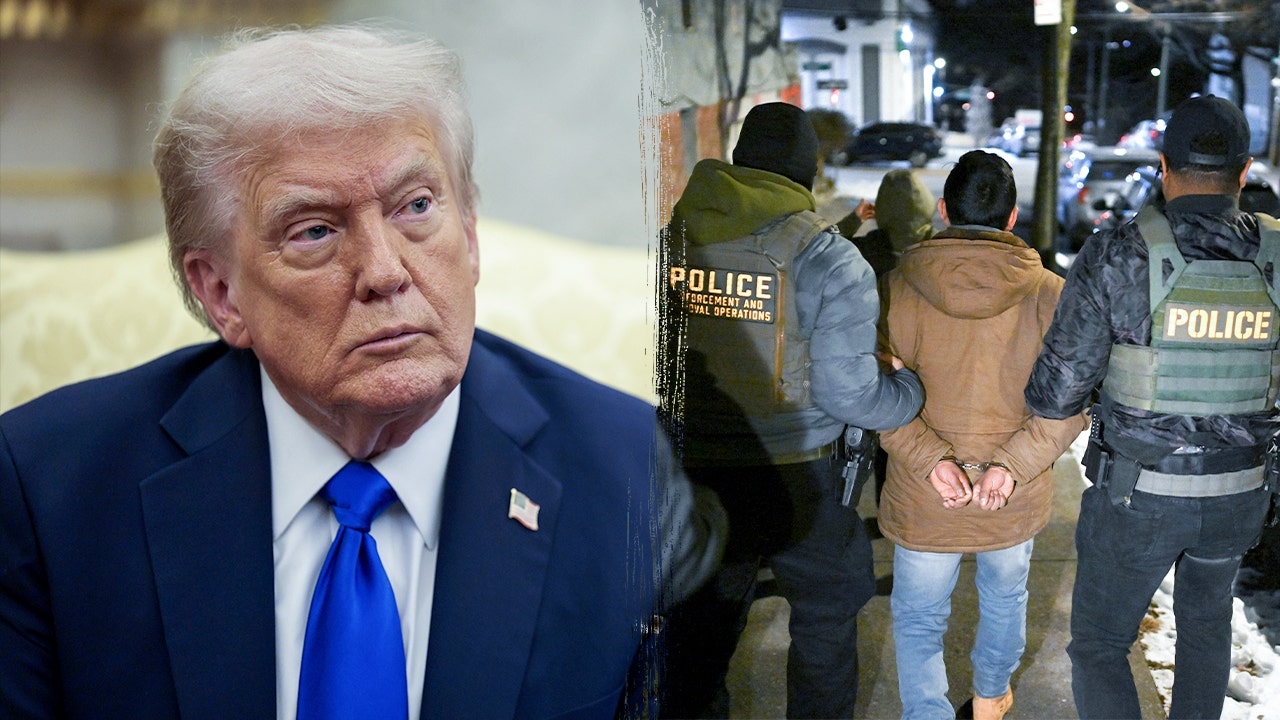Kansas
Kansas City traffic deaths keep going up, while its effort to make roads safer is underfunded

You’re trying to cross the street, only to jump back after a speeding car blazes through the crosswalk. You’re biking to work but nearly get hit after someone runs a red light. You’re driving back from the grocery store and have to swerve to avoid a reckless driver.
Kansas City residents know these experiences all too well, but many aren’t lucky enough to avoid being hit. In 2023, 102 people died in traffic crashes, according to the Kansas City Police Department.
That’s an increase from 2022, when 89 people died in crashes, and the opposite direction that Kansas City hoped it would see.
For the last three years, the city’s Vision Zero program has worked to change roadways with the goal of eliminating traffic fatalities entirely by the end of the decade.
But Kansas City still has one of the country’s highest rates of fatal car crashes, and local advocates and leaders say the city’s fortune won’t change without more funding.
“There is a lack of political will to make all of the investments and changes necessary to not only allow Vision Zero to take root but to enable it to succeed,” says Michael Kelley, policy director with transit advocacy group BikeWalkKC and a member of the Vision Zero task force.
“Until that changes, we are going to continue to be in this rut where it is somewhat making progress,” Kelley continued. “We are making some strides, but we’re not moving entirely in the direction of a safer Kansas City for everyone.”
Behind Vision Zero
Carlos Moreno
/
KCUR 89.3
In a city split by massive highways and imposing six-lane streets, Kansas City’s Vision Zero program tries to correct roads to be safer for all kinds of users — not just cars. Of those killed this year in crashes, 20% were pedestrians and 4% were on a bicycle.
Kansas City has multiple options for making existing roads safer, with varying degrees of difficulty and cost, depending on the specific needs of the area.
Across the metro, Kansas City has been slowly making intersection and crosswalk improvements and implementing “road diets,” reducing the number of driving lanes in favor of things like bike lanes, medians, widened sidewalks and even dedicated streetcar lanes.
Kansas City Council adopted the plan in 2020, but the city didn’t publish a final action plan until 2022. In the interim, the Public Works Department adapted road projects to the principles of the program.
City Manager Brian Platt said he believes that the new group of city council members, elected in August 2023, understand the urgency of Vision Zero.
“If anything, I’d say that the discussion and deliberation is more around how we do that and not if we should do that,” Platt said.
So far, most of the Vision Zero projects have been cheaper and quicker to build. Platt said that helps the city finalize the design and get feedback before making larger, more permanent changes.
One example is the Gillham Cycle Track — a two-way protected pedestrian and bike lane that connects the Plaza to the Crossroads — which the city is now trying to make stronger and more permanent.
However, the vast majority of fatal and serious injury crashes happen on just 12% of Kansas City roads, most notably Southwest Trafficway, Independence Avenue, Truman Road and Troost Avenue.
The city is slowly targeting those roads, known as the high injury network, but that requires more intricate fixes, and a lot more money.
Kansas City currently dedicates $500,000 a year to Vision Zero through General Obligation Bonds, which are paid off by property tax money but do not require a voter-approved tax increase. That money is only set to last through the 2025-26 fiscal year, however.
It’s also not enough to fund the projects the city already has planned.
“If you look at these projects we have, we’re only addressing intersections that are on the high injury network,” said Kansas City chief mobility officer Bailey Waters at a Vision Zero Taskforce meeting in December. “We’re not even able to go and look at doing corridors… with our existing funding, I don’t foresee us reaching our goal by 2030.”
What’s next for Vision Zero

Carlos Moreno
/
KCUR 89.3
The Public Works Department has 13 road improvement projects scheduled for 2024 under the Vision Zero program, which will use bonds and neighborhood PIAC funding. Those projects span the city, from the Northland to Waldo, from the Westside to 18th and Vine.
But they are still a fraction of the road improvements that Kansas City needs.
Public Works says it receives 200 neighborhood traffic calming requests each year through its 311 system. According to Waters, addressing those requests alone — with changes like speed humps and curb extensions — would cost about $5.4 million on their own.
Platt said he’s working with City Council and Mayor Quinton Lucas to consolidate and increase the money given to Vision Zero in the next budget.
Plus, a new federal Safe Streets and Roads for All grant will support a citywide speed limit review, where the city can analyze appropriate limits and investigate roads that have excessive speeding.
“We know that the data shows that the slower vehicles go, the less serious the injuries are and the fewer crashes we see,” Platt said. “That’s one of the main ways we help make our streets safer.”
Since Vision Zero began, minor injuries have decreased, but crashes where people are seriously injured or killed have remained consistently high.
The city will also update its Traffic Engineering and Operations manual to align with the mission, and help create a streets design guide — centralizing city planning resources for roads and green infrastructure so they include Vision Zero and Complete Streets priorities.
In that vein, Kansas City is also trying to fit projects that don’t fall directly under Vision Zero to align with the program’s principles.
That includes a recently announced $14 million plan at 75th and Wornall Road in Waldo, which includes upgraded pavement, intersection improvements and new sidewalks. The projected completion date is fall 2025.
In its 2022 action plan, the city found that fatal or serious injury crashes were twice as likely to happen in a transportation-disadvantaged area — where people have to spend more or take longer to get where they need to go. In Kansas City, those areas are primarily located east of Troost and in the Historic Northeast.
The report also found that Black people were twice as likely to be killed and nearly four times as likely to be injured in a traffic crash than white people.
Kansas City’s ordinance creating Vision Zero makes it clear that the program is meant to address such inequities. But not all of its projects are made the same.

Carlos Moreno
/
KCUR 89.3
While most of the completed projects so far have been in the 3rd and 4th City Council districts, which covers those transportation-disadvantaged neighborhoods and much of downtown, those have also tended to be lower-cost efforts like speed humps and improved crosswalk signals.
Due to the scarcity of funding, most of the more permanent and more effective fixes have yet to be undertaken.
The other roadblock is external: Road safety projects aren’t always welcomed by their intended communities, something Kelley blames on a lack of engagement by the city.
Last year, bike lanes added to the 3rd district along Truman Road — a project that complimented, but wasn’t technically part of, Vision Zero — faced the threat of removal after residents and business owners complained. While City Council considered a compromise that would take away a bike lane on one side of the street, no action has been taken yet.
In other instances, Kelley said projects have been changed or held up because of controversy over where projects should go, and who deserves them first.
“There is still this mindset of, ‘If I give this place more, that means that I’m getting less,’” Kelley said. “We can’t continue to operate in a scarcity mindset because that inevitably means that the people who need it the most will continue to receive less than what they need to be safer.”
The Vision Zero task force says it’s working on an education campaign to make road improvement projects more understandable to residents, as well as less controversial. The city has also added a button to the 311 app and website so that residents can more easily make traffic-calming requests.
Kelley said the hardest part of his job is helping grieving families deal with the death of a loved one, “knowing they’re being killed on streets that we knew as a city were unsafe.”
Kelley wants to remain optimistic, though, that Kansas City will find a way to meet its goal.
“I have to be,” Kelley said, “because the alternative is I have more crying folks on the phone. More funerals and memorial services I’m asked to go to. I don’t want to think about a reality where we have more of that.”

Kansas
Kansas City Royals Face Key Offseason Choice On 12-Year Veteran

The Kansas City Royals are entering a crucial offseason after finishing third in the American League Central and missing the postseason. Following a disappointing 2025 campaign, the team’s biggest concern remains the offense, which produced just 651 runs—the third-lowest total in the American League.
Even after adding Mike Yastrzemski and Randal Grichuk during the season, run production didn’t improve much. Now, both outfielders are free agents, and the Royals must decide whether to bring Grichuk back or move in another direction. His mutual option was declined, but a return isn’t out of the question. Here’s one reason to keep him—and one reason to let him walk.
Keeping the veteran outfielder around as a platoon bat for at least one more season could make sense for Kansas City. He wouldn’t need to be an everyday player, and when paired with someone like Yastrzemski, he could provide value against left-handed pitching.
Grichuk’s power from the right side and his ability to play all three outfield spots make him a useful depth piece. In the right role, he can help stretch the lineup and offer veteran leadership to a young Royals roster.
Financially, he’s also a low-risk option. The small-market Royals aren’t expected to pursue expensive free agents such as Alex Bregman, Kyle Tucker, or Kyle Schwarber, so retaining Grichuk on an affordable deal could make sense while the front office explores other upgrades.
That said, there are strong arguments for letting Grichuk go. The 33-year-old outfielder struggled in 2025, hitting just .228/.273/.401 with nine home runs, 27 RBI, and a .674 OPS. Kansas City can likely find more productive options on the market.
A player like Harrison Bader, for example, brings elite defense, speed, and everyday value at a reasonable cost. Adding a consistent bat or glove-first outfielder could give the Royals the spark they need to retool their lineup heading into 2026.
The Royals can’t afford to run it back with the same group that fell short in 2025. Whether they keep Grichuk as a platoon option or move on entirely, this offseason will be about surrounding Bobby Witt Jr. and the young core with the right pieces to return to contention in 2026.
More MLB: Royals Expected To Bring Back Nine-Time All-Star As 2026 Plans Take Shape
Kansas
One Of Kansas City’s Best-Kept Secrets Is A Quiet, Friendly Suburb That Is Perfect For Retirees – Islands
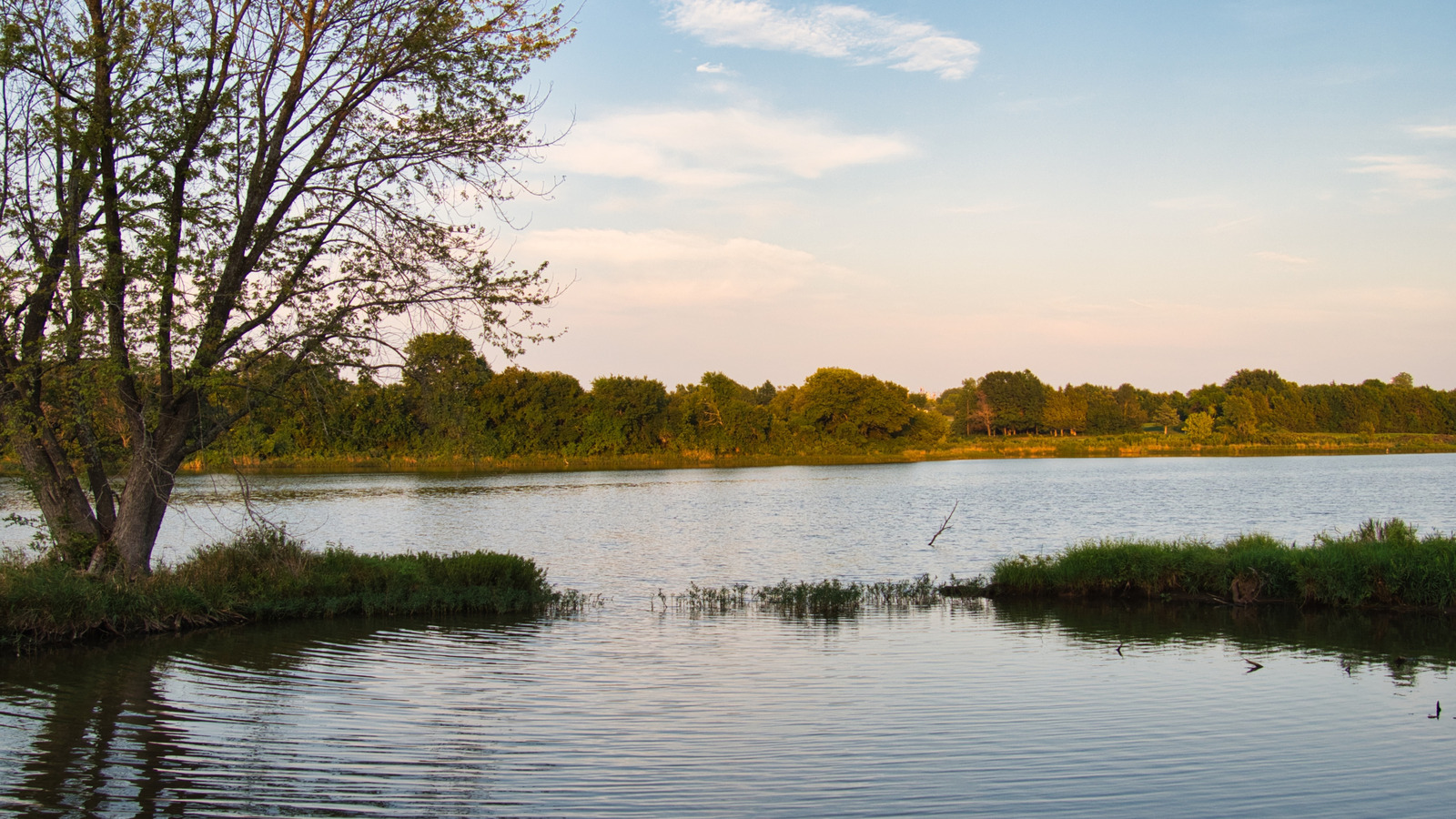
Pity the Sunflower State, often derided as a “flyover state” not worthy of much attention. Nonsense. A road trip through Kansas reveals it’s a wildly underrated gem that offers secret canyons and historic towns. Yet one of the state’s best-kept secrets might be worth visiting a bit longer — perhaps for the rest of one’s post-work life. Not far from Kansas City lies Spring Hill, a quiet, friendly suburb that is perfect for retirees.
The town’s neatest trick lies in its dense offering of modern amenities, without the urban bustle and grind, all while keeping vital small-town rituals front and center. Retirees and residents alike can enjoy a wholesome lifestyle while also hitting the links, going for a swim, and diving into a broad swath of activities meant to maintain health and a sense of community. That includes a bevy of “third places”, community spaces that foster a sense of belonging and connectedness.
The town’s youth performing arts center bridges a gap between generations. Meanwhile, the Festival Choral Society holds annual Christmas and Spring concerts, with all the usual community-building activities that accompany such organizations. A laundry list of groups, including an arts council and historical society, rounds out plenty of enriching ways to fill a suddenly empty calendar. The Spring Hill Farmers Market, meanwhile, offers a chance to rub elbows with local producers who bring their wares to town every Saturday, from late spring to the beginning of fall. Perhaps most important of all, Spring Hill offers plenty of chances to stay fit and healthy.
Hit the links, take a dip, or just stay active in Spring Hill
Spring Hill has blossomed into an ideal retirement community with plenty of ways to answer the critical question facing anyone who has just ended their career: What next? The suburb offers a smorgasbord of retiree-friendly activities. The Sycamore Ridge public golf course offers the perfect 18-hole diversion for folks enjoying their golden years. Its sand bunkers, surrounding woods, and undulating greens provide the perfect challenging outing on the links, regardless of your handicap. If you’re a well-seasoned golfer, there’s no better way to build community and health than joining one of the golf club’s leagues. Beginners, don’t fret. The club’s private lessons will get your handicap down to something manageable. Not thrilled about spending your retirement golfing? Grab a swim cap instead.
You can’t find a beach anywhere, so Spring Hill effectively built one. The town’s aquatic center offers the perfect antidote to Kansas’s shortcomings as a landlocked state. The center includes over a dozen different water-based features, from aqua-park style water slides to diving boards. The shallow entry at one of the pools may not have sand, but it perfectly mimics the subtle joy of wading into the water. There are also senior-friendly exercise classes, such as River Walking, a low-impact movement that uses the water as resistance. If you’re not feeling up for exertion of any kind, kick back in the lazy river. Let the adjacent park keep the kids or grandkids busy.
If golf bores you and you would rather stay dry (both fair choices), the Spring Hill Recreation Commission has you covered. From Zumba to yoga, the commission’s calendar is stuffed with adult fitness and recreation opportunities. Cooking classes, field trips, and art classes are just some of the other non-exercise activities available.
Planning a trip to Spring Hill
Whether you’re visiting Spring Hill to consider a permanent move or just stopping by for a weekend, you’ll want a car to get around. Those coming in from farther afield can use the closest major transit hub, Kansas City International Airport, which is less than an hour from Spring Hill. After landing, be sure to spend a few hours in Kansas City itself, which is considered the barbecue capital of the world. Then, on the drive down, make a pitstop at Overland Park, an under-the-radar artsy city with outdoor fun and downtown amenities.
Those looking to retire to Spring Hill have several retirement communities and facilities to choose from. The nearby Benton House of Olathe, for example, offers a mix of active social and physical activities while emphasizing building routines to maintain and improve mental health. Colonial Oaks, another assisted living facility in Spring Hill, offers a similar collection of activities and services. Those with deeper pockets may be able to buy a home in Spring Hill, with median home values of $323,300.
While there’s no ideal time to retire to Spring Hill (those maths are sort of set in stone), you do have an ideal time to visit. The town’s annual Fall Festival, held in late September, features a parade, live shows, and local vendors selling their crafts and food. It all culminates in a music festival, then a Chili Cookoff. Conversely, you can visit during the fall festival’s sibling, Daffodil Days, which coincides with Arbor Day in April. A celebratory environment blossoms with music, games, and a chainsaw wood carver, among other attractions. It’s the perfect outing for a retiree and visiting family members.
Kansas
Kansas Lottery Powerball, Pick 3 winning numbers for Nov. 1, 2025
The Kansas Lottery offers several draw games for those aiming to win big. Here’s a look at Nov. 1, 2025, results for each game:
Winning Powerball numbers from Nov. 1 drawing
02-26-43-44-62, Powerball: 22, Power Play: 2
Check Powerball payouts and previous drawings here.
Winning Pick 3 numbers from Nov. 1 drawing
Midday: 0-7-2
Evening: 6-2-1
Check Pick 3 payouts and previous drawings here.
Winning 2 By 2 numbers from Nov. 1 drawing
Red Balls: 25-26, White Balls: 09-18
Check 2 By 2 payouts and previous drawings here.
Winning Lucky For Life numbers from Nov. 1 drawing
06-19-28-38-46, Lucky Ball: 08
Check Lucky For Life payouts and previous drawings here.
Winning Lotto America numbers from Nov. 1 drawing
08-11-23-31-47, Star Ball: 06, ASB: 02
Check Lotto America payouts and previous drawings here.
Winning Super Kansas Cash numbers from Nov. 1 drawing
06-14-22-25-29, Cash Ball: 19
Check Super Kansas Cash payouts and previous drawings here.
Feeling lucky? Explore the latest lottery news & results
Are you a winner? Here’s how to claim your lottery prize
All Kansas Lottery retailers will redeem prizes up to $599. For prizes over $599, winners can submit winning tickets through the mail or in person at select Kansas Lottery offices.
By mail, send a winner claim form and your signed lottery ticket to:
Kansas Lottery Headquarters
128 N Kansas Avenue
Topeka, KS 66603-3638
(785) 296-5700
To submit in person, sign the back of your ticket, fill out a claim form, and deliver the form along with your signed lottery ticket to Kansas Lottery headquarters. 128 N Kansas Avenue, Topeka, KS 66603-3638, (785) 296-5700. Hours: 8 a.m. to 5 p.m., Monday through Friday. This office can cash prizes of any amount.
Check previous winning numbers and payouts at Kansas Lottery.
When are the Kansas Lottery drawings held?
- Powerball: 9:59 p.m. CT Monday, Wednesday and Saturday.
- Mega Millions: 10 p.m. CT Tuesday and Friday.
- Pick 3 Midday/Evening: 1:10 p.m. and 9:10 p.m. CT daily.
- 2 By 2: 9:30 p.m. CT daily.
- Lucky for Life: 9:38 p.m. CT daily.
- Lotto America: 9:15 p.m. CT Monday, Wednesday and Saturday.
- Super Kansas Cash: 9:10 p.m. CT Monday, Wednesday and Saturday.
This results page was generated automatically using information from TinBu and a template written and reviewed by a Kansas editor. You can send feedback using this form.
-

 Milwaukee, WI7 days ago
Milwaukee, WI7 days agoLongtime anchor Shannon Sims is leaving Milwaukee’s WTMJ-TV (Channel 4)
-

 News1 week ago
News1 week agoWith food stamps set to dry up Nov. 1, SNAP recipients say they fear what’s next
-

 Alabama1 week ago
Alabama1 week agoHow did former Alabama basketball star Mark Sears do in NBA debut with Milwaukee Bucks?
-
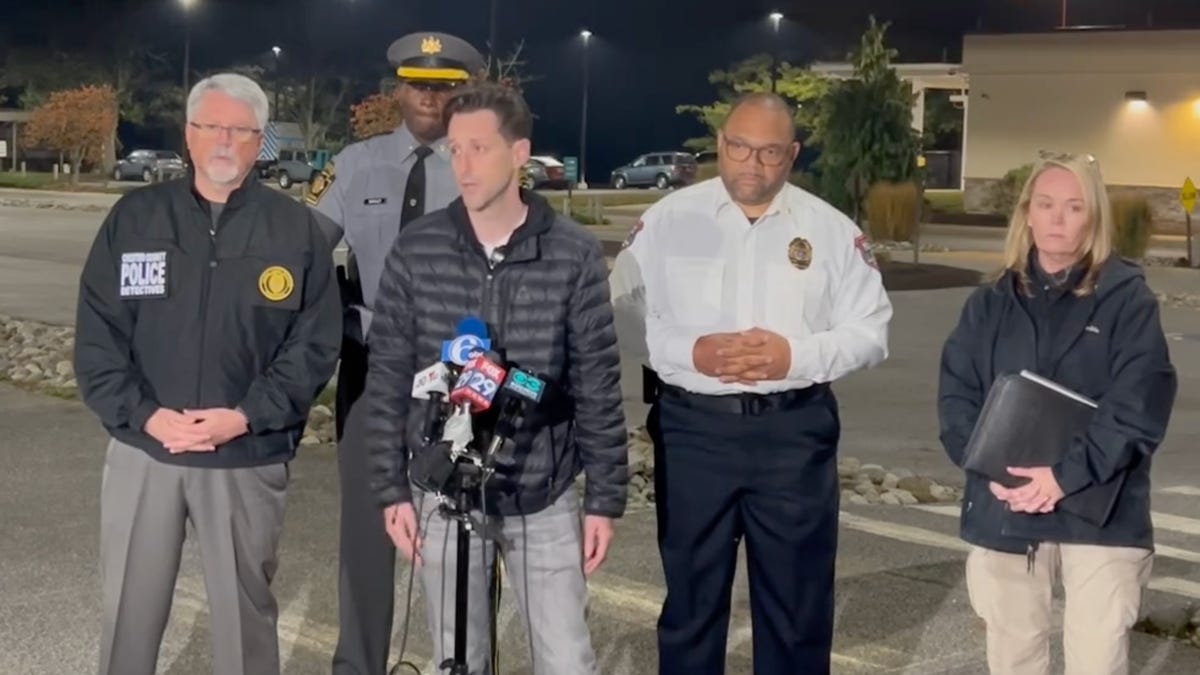
 News1 week ago
News1 week ago1 dead, 6 injured in shooting at Lincoln University homecoming festivities
-
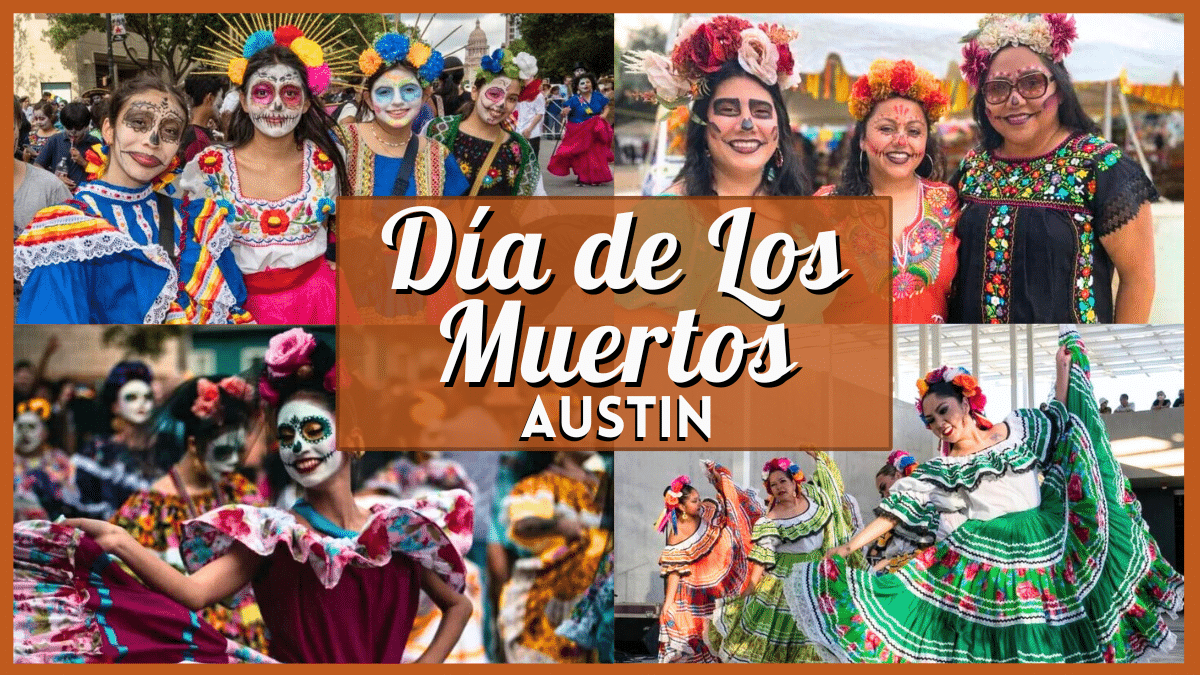
 Austin, TX1 week ago
Austin, TX1 week agoDia De Los Muertos Austin: Parades, Altars & Events
-

 Culture1 week ago
Culture1 week agoVideo: Tyler Mitchell Breaks Down Three Photos From His New Book
-

 Culture6 days ago
Culture6 days agoVideo: Dissecting Three Stephen King Adaptations
-

 Seattle, WA7 days ago
Seattle, WA7 days agoFOX 13’s Aaron Levine wins back-to-back Jeopardy! episodes



